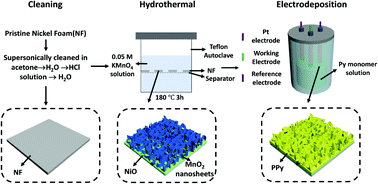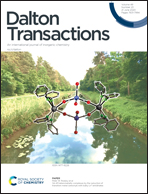Polypyrrole coated δ-MnO2 nanosheet arrays as a highly stable lithium-ion-storage anode†
Abstract
Manganese dioxide (MnO2) with a conversion mechanism is regarded as a promising anode material for lithium-ion batteries (LIBs) owing to its high theoretical capacity (∼1223 mA h g−1) and environmental benignity as well as low cost. However, it suffers from insufficient rate capability and poor cyclic stability. To circumvent this obstacle, semiconducting polypyrrole coated-δ-MnO2 nanosheet arrays on nickel foam (denoted as MnO2@PPy/NF) are prepared via hydrothermal growth of MnO2 followed by the electrodeposition of PPy on the anode in LIBs. The electrode with ∼50 nm thick PPy coating exhibits an outstanding overall electrochemical performance. Specifically, a high rate capability is obtained with ∼430 mA h g−1 of discharge capacity at a high current density of 2.67 A g−1 and more than 95% capacity is retained after over 120 cycles at a current rate of 0.86 A g−1. These high electrochemical performances are attributed to the special structure which shortens the ion diffusion pathway, accelerates charge transfer, and alleviates volume change in the charging/discharging process, suggesting a promising route for designing a conversion-type anode material for LIBs.



 Please wait while we load your content...
Please wait while we load your content...